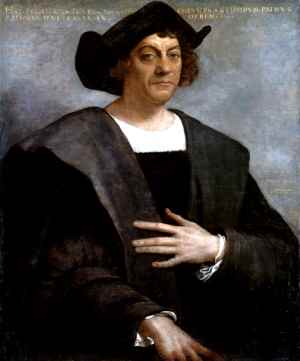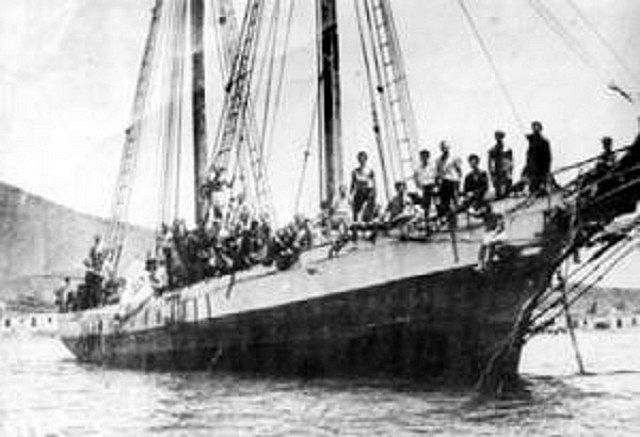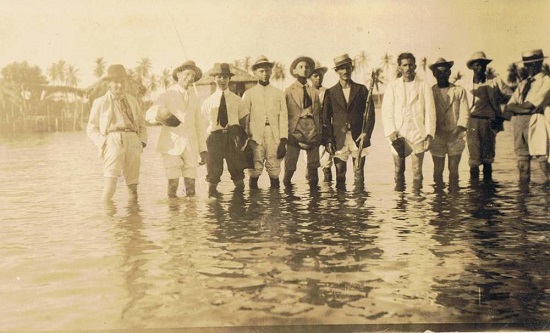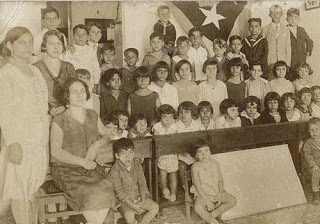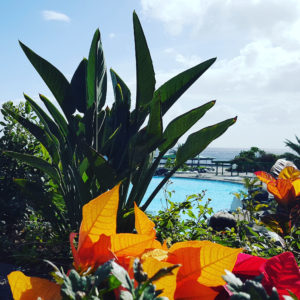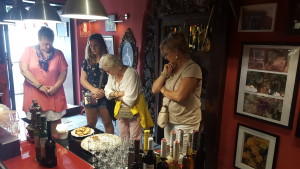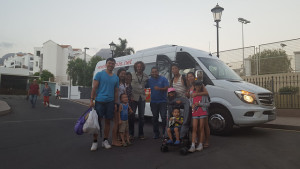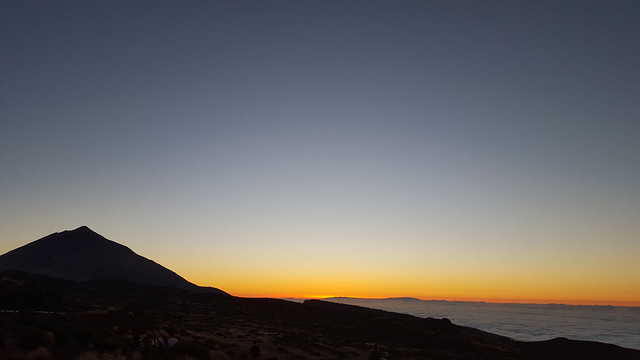Here’s continuation of the history of emigration and historical connections between Tenerife and South America. To read initial post with the 1st part of the story, click here – Tenerife & South America Connections – Part 1.
The first milestone of Dominican population policy was the foundation on the outskirts of Santo Domingo de San Carlos de Tenerife in 1684. Although at first they had difficulties, they were affected by the epidemics and had to change their location, they prospered as a center that supplied agricultural products to the capital. Since 1690, when 25 families were added to the population of the second city of the country, Santiago in the fertile northern valley of the Cibao, the Canarians were directed towards the border of the region and north of the country, supported by the government’s policy of serving as a brake on The French occupation and stimulated by the advantages of sales of cattle and tobacco in the French Santo Domingo. Cardinal axis of the expansion in the border region was the foundation with canary families of the town of Hincha in 1704. Years had taken place the one of Banica. He saw around him the dynamism of a region whose base of growth was precisely that exchange. Livestock demand became the biggest driver of its growth. It was joined in 1733 by San Juan de la Maguana with nearby hateros, neighbors of Azua and scattered islanders. Together with the population of Hincha, the valley of the Cibao begins. In the decade of the thirties it was of such caliber that its main city, Santiago, came to count on a company of island militias. This internal colonization favored the formation of a clear white or mulatto peasantry in areas of intense island dominance such as La Vega or Moca, the so-called monteros, rural symbols of Dominican nationality.
From 1730 its economic takeoff is finally stimulated by the Crown which decides to invest large sums for colonization with people from Canary Islands of empty areas. Finances was a good part of the passages of the families, since another part is in charge of the shipowners, who dad to transport fifty tons for every thousand tons free from 1678 and the total cost of its installation. There was no longer an urgent migration to the unknown of emigrants without ties in the West Indies. You can see better possibilities for the future. Young families, uprooted women with children begin this adventure. Its axis will be Puerto Plata and Montecristi in the north and the Samaná Peninsula in the North East. The border area continued to grow with the reinforcement of Azua, the foundation of Neiba Las Caobas, Dajabon and San Rafael de la Angostura. In 1768, in the south of Bani, a genuine ethnic parenthesis in a predominantly mulatto-dominated south. Its extraordinary impact can be seen in its vertiginous growth between 1740 and 1760 that doubles its population, which goes from 25-30,000 inhabitants to 52-55,000, with a greater emphasis on the areas of Canarian colonization. The average number of members per family was 6.25. Its high birth rate explains that it reached 100,000 inhabitants in the early 1990s.
The first location in Puerto Rico at the end of century XVII is River Piedras with 20 families from Tenerife transferred by Juan Fernandez Franco de Medina in exchange for the Government of the island. Between 1720 and 1730 were transferred by the Crown partly financed their transfer with payment of passage by the shipping 176 families with a total of 882 people. It brought about a radical change in insular demography of Puerto Rico. In 1729 reached 4,570 inhabitants and in 1750 14,027.
They are distributed in the first arrivals by the present Humacao, but the initial establishment of 1722 fails. Larger projection reaches the settled ones by Loíza, Bayamón and the Toa. This growing concentration enables the foundation in 1745 of Toa Baja, followed in 1751 by the Alta. Both are decisive the colonizing participation of the Canarians to the point of being given the cult of the Candelaria and is realized, as it has survived until the present, the representation of the apparition of the Virgin to the primitive inhabitants of the islands. Another region in which its influence was notorious was that of the west coast of Puerto Rico from Aguada to Cabo Rojo. In 1729 by Mayagüez, Añasco and Rincon were also established. They founded a hermitage in Mayagüez to the Candelaria and another one in Rincón in honor to Santa Rosa. In Añasco, the old hermitage of San Antonio Abad became a parish. Although not led by government action, new groups settled. They were the most important factor in their extraordinary development. It almost triples in 1799, when it reaches 153,232 people. Of the 28 new settlements founded between 1714 and 1797, no less than 19 owe their origin to the colonizing effort of the children of the Canary Islands. In the first half of the nineteenth century new contributions from the Canary Islands, which will give rise to new populations, such as Naguabo on the western slope of Puerto Rico, will demonstrate the role they played in the transition from slave labor to the wage laborer on an island where slave trade Never reached Cuban levels. From the third decade of the nineteenth century, the Canarians became pioneers of free labor in sugar cane, to such an extent that the dissemination of such a successful experience was forbidden.
In 1740 the Crown decided to create the Company of Havana to promote trade between Cuba and the metropolis and forced to transport 50 families to Florida. In 1757, 375 people were transferred. In successive years until 1761 their number would reach 711. In 1763, as a consequence of the war with England, Florida passed to British hands. Most, though not all, of Canarians decided to move to Cuba, where they settled in the west of the island.
The Crown since the late seventeenth century became interested in the colonization of Texas. Between 1724 and 1733 there were 137 families from Tenerife left with that destiny. But, when they arrived in Havana, they decided to settle in Cuba. The foundation of San Antonio was prosperous, however, with just 64 people in 1731. These were established as their oligarchy, channeling to their advantage the irrigation, which gave rise to conflicts with the missions established there. They supported both the independence of Mexico and the Republic of Texas, some of them dying in the defense of the Alamo against the Mexican troops.
The Crown decides to populate Louisiana, occupied by the Spaniards since 1763. Between 1777 and 1783, years of acute crisis in Canary Islands, aggravated by the paralysis of trade as a result of the American Revolution, they embark with that objective on 4,000 people from Canary Islands arrived definitively to that North American territory and around 2,000 to Venezuela and Cuba. They constituted four populations that had a life plagued with difficulties. Only San Bernardo prospered, where they continued to maintain the Canarian culture and speech to this day and Valenzuela, where they were mixed with French. Most moved to West Florida and Baton Rouge, the capital of Louisiana, where part of the town continued with the name “Spanish Town” during the 19th century.
Another destination of emigration from Tenerife and Canary Islands generally was Uruguay. The Río de la Plata had been a territory scarcely colonized by Spain. The Spanish obsession to avoid smuggling and the evasion of precious metals had led to their precarious settlement. But the Portuguese advance on Uruguay with the foundation of the colony of Sacramento in 1680 led the Spanish Crown to promote the emigration from Canary Islands as a way to fulfill the role of living frontier in front of the Portuguese expansion.
The result of this policy would be the dispatch of two expeditions of 25 and 30 families from the Canary Islands which, together with a few from Buenos Aires, would give rise to the founding of Montevideo. Once again it was a question of reconciling the interests of the Canarian elites with the attainment of the possibility of freely trading with the Rio de la Plata, with the population policy of the Crown. Population in exchange for trade. But the misgivings and pressures led to the immediate paralysis of that exchange in 1729. I was more able to balance the fear of smuggling that this traffic would cause and the monopolistic interests of the bourgeoisie of Cadiz than the need to promote the colonization of an empty territory and Threatened as it was the Uruguayan, reason why since that year the expeditions ceased strictly and with them the Spanish population was seriously affected.
The Canarian settlers formed a town hall in Montevideo But they were not benefited in proportion to their number in the distribution of land ownership. Peninsular or Buenosaireans monopolized large cattle estates and hampered the spread of small agricultural property.
From the early years of the nineteenth century, a Santa Cruz merchant established in Arrecife, Francisco Aguilar, chartered an expedition of 200 people from Lanzarote island to Montevideo. With it began a period of intense emigration from Lanzarote and Fuerteventura islands to that destination, not interrupted by the warlike avatars that crossed the nascent Republic. An expatriation that was denounced by the terrible conditions of the crossing and the exploitation of the passengers that had some tragic consequences, as happened with the one realized by the brothers Morales in 1836. Blinded by the greed and the ignorance contracted more squares than they could fit in the ship, so that the food was lacking and came by hunger to eat human flesh.
This emigration became, therefore, a lucrative business both for broad sectors of the dominant Canarian classes as for certain rich Uruguayans. These expeditions were monopolized by two powerful businessmen from Montevideo: Juan María Pérez and Samuel Fisher, who not only negotiated the transportation of settlers but owned their own lands to which they tied passengers to the debts of the passage or acquired them in advantageous concessions to the State to be used for colonization projects. A statistic of the time figures the Canary Islands immigration to Uruguay between 1835 and 1845 around the 8,200 people, which constituted 17% of all the immigrants and 65% of the Spaniards. It was an immigration that intensely transformed the interior of the country, with a preferential agricultural destination. With the outbreak of the Great War in Uruguay, the situation of the Canary Islands was aggravated. The exemption of the military service was suppressed and they were forced to enlist in the National Guard to those between the ages of 14 and 45 years. There were cases of children of 12 years of age who appeared in the first line of combat.
Between 1877 and 1900 the emigration to Uruguay continued, but it did not have the relief of the previous stage. It is estimated at 5,749 the number of immigrants who remained permanently in the Eastern Republic. On the other hand, among the new arrivals stands out the critical year of 1878 in which arrived 2.951. The balances were negative as of that year with the crisis that affected the Rio de la Plata and the bankruptcy of the Banking Baring Brothers with heavy investments in the region.
The Canarians contributed to the agrarian development of the country between 1830 and 1880. They cultivated land in the departments of Montevideo, San José, Maldonado and Colonia. In spite of this they were also occupied in urban jobs, such as commerce, or handicrafts, although the field was their fundamental activity. In a country where the cattle-ravine was all over, the islanders expanded agriculture. Such influence reached in the agrarian areas such as Canalones, Colonia, San José and Soria, that today the inhabitants of the first of the districts are still called Canarians and by extension they are denominated to those of the agricultural zone of the south of the country and the entire rural population. The cereals were their majority culture, activity in which they were trained the lanzaroteños and majoreros for being his essential activity. This specialization made the common voice the expression that the Uruguayans did not know how to plant, but to eat meat, and it was the islanders who leased the lands and began to grow wheat and corn. When the threshing was carried out by means of the collective work among the neighbors, a custom was born the company, born of the collective solidarity among the countrymen. This group inbreeding not only played an important role in the production, but in the marriages. The relations of coexistence and kinship between the Canarians allowed their survival, keeping alive the cultural and family ties over time in the rural areas of the country.
In 1831 President Paez called Canarians exclusively to populate fertile Venezuelan fields as substitutes for slaves. A migratory flow of Canarian families was established especially in the 1940s. Their influence was so decisive that they played a crucial role in the Federal War in Venezuela. After the peace lived his golden age in the Government of Guzmán Blanco. The coffee boom and the Cuban war crisis favored it in a stage of serious depression in the Canary Islands after the cricket of the cochineal. The importance of this contingent was such that between 1874 and 1888 of the 20,827 registered immigrants 14,403 were islanders. In the last decade of the century, despite the coffee crisis since 1893, they continued to flee from military service for the war in Cuba. It will be the years in which Secundino Delgado publishes El Guanche.
After the crisis of the vineyard in 1814 the migration focused only on Cuba and Puerto Rico, given the warlike conflict in Venezuela. There were years of intense migration in which Canarians are dedicated in the province of Havana to the internal supply or as major of the sugar plantations. They extend through the west and center of the island and to a lesser extent by the east, devoted essentially to the cultivation of tobacco. From the 1940s on, a process of gradual substitution of slave labor by agricultural wage laborers was witnessed. Government policy rejected white colonization. Within the framework of the Ten Years’ War (1868-1878), the Canarian emigration was considered by the Cuban autonomists and separatists as differentiated from the peninsular, which led them to oppose and enhance it. The usual formula for emigration was the contract. Complicity and fraud preside over the actions of the ruling Canarian classes. The definitive extinction of slavery was in 1886. It is estimated that between 50 and 60,000 the total number of island emigrants in the second half of the nineteenth century. The harvest of 1887 was the first that was made entirely with salaried workers. War conflicts prevented the flow of the desired Canary Islands despite the cochineal crash since 1875.
The Canary emigration to Cuba after the independence and the economic revival that followed with the investment of American capitals, gave to the island experienced farmers in combining all type of agricultural works. It will be a migration with a high percentage of men and returnees, who invested their savings in Canary Islands, favoring the division of the great property especially in the highlands of the towns. The wage differences between the two sides and the well-being of the Cuban peso stimulated that return in a boom period in the islands with economic revival thanks to new export crops (bananas, tomatoes and potatoes). It intensified from 1910, and especially between 1915-20 by the serious consequences of World War I. Cuban economic well-being peaked in those years. But in 1921 an impressive landslide originated. There was some economic recovery between 1923-24, but the crash of 29 brought with it the definitive collapse of the migration.
A part of the emigration was channeled towards tobacco in Pinar del Río and the central region of the island and another to the sugar cane in Oriente. About 30% stayed on the island, while the rest returned. These were mainly young men employed in the work of tobacco or sugarcane harvests, in the cultivation of fruit trees or in street vending. Those who remained were mostly tobacco growers or sugar cane planters who brought their families or married daughters from Canary Islands. In the vegas began as workers to the part of the profits. With their savings in times of prosperity they then bought properties, finally settled in them, as was characteristic of the area of Sancti Spiritus where the low prices of hitherto hilly terrains favored the settlement of the population in that region, where the Canarian presence was Very numerous. The depopulation, because of the military service, especially in the high moments of the War of Morocco, was also another of its inducements. One of its characteristic features was the Canary association creating delegations of the Canary Islands Association all over the island. They gave rise to health centers and an important journalistic movement. A minority of these gave rise in the 20 to the creation of the Canary Nationalist Party and expressed themselves as “El Guanche”.
The emigration to Venezuela returned to reactivate following the crash of 29, which closed the doors to the migration of Cuba. With the Spanish Civil War a serious period of crisis and autarky was on the islands, which would not leave until the sixties. But between 1936 and 1946 the migration was practically interrupted. It was limited to some political fugitives. But from the year 1948, before the serious difficulties that imposed the Francoist Spain to the migration with difficult and costly procedures, was born the phantom ships. In it the Canary Islands fishing fleet was destined to the transfer of clandestine immigrants in such sailboats. Between that year and 1952 it is estimated that about 8,000 crossed Atlantic. It was undoubtedly one of the most dramatic and epic episodes of the Canarian eagerness to take to the New Promised Arcade, in which ships with a maximum availability of 50 people came to transport 286. Such was the scandal and the repercussion it had on Venezuela that Pérez Jiménez pressured Franco to reduce immigration procedures on August 19, 1950. The era of open doors was born. It is estimated that between 1951 and 1958 more than 60,000 people left Canary Islands and arrived to Venezuela. With the fall of Perez Jimenez opens the one of the family reconstruction. Women become 60% of the emigrants. The last golden age of this migration will be the 1970s. The crisis of 73 in the Canary Islands and the last golden age of oil with its steady rise that allowed to triple the budget and nationalize it, led many immigrants, generally young, relatives of those already established to take root there.
The contribution of the Canaries to the Venezuelan modernization was decisive in the field of agriculture. Sectors such as tomato, banana, onion or potatoes owe their active role to a great extent. Regions like those of Barquisimeto, Easter Valley, Orituco or Coro in Venezuela were reformed their agrarian structures with the opening of wells and the generalization of irrigation. But they were not just farmers, they also played a role in industry, commerce and the financial sector. In the wholesale distribution of agricultural products, its hegemony in markets such as Coche was clear.
Nowadays we can observe the different situation and many people from Venezuela, Colombia, Cuba, Uruguay and Argentina with and without Canarian roots are moving to settle in Canary Islands. If you take a private tour to Anaga or a private Wine Tour in Tenerife with Tenerife Host, you will be able to see, experience and taste this nice mix of cultures.
